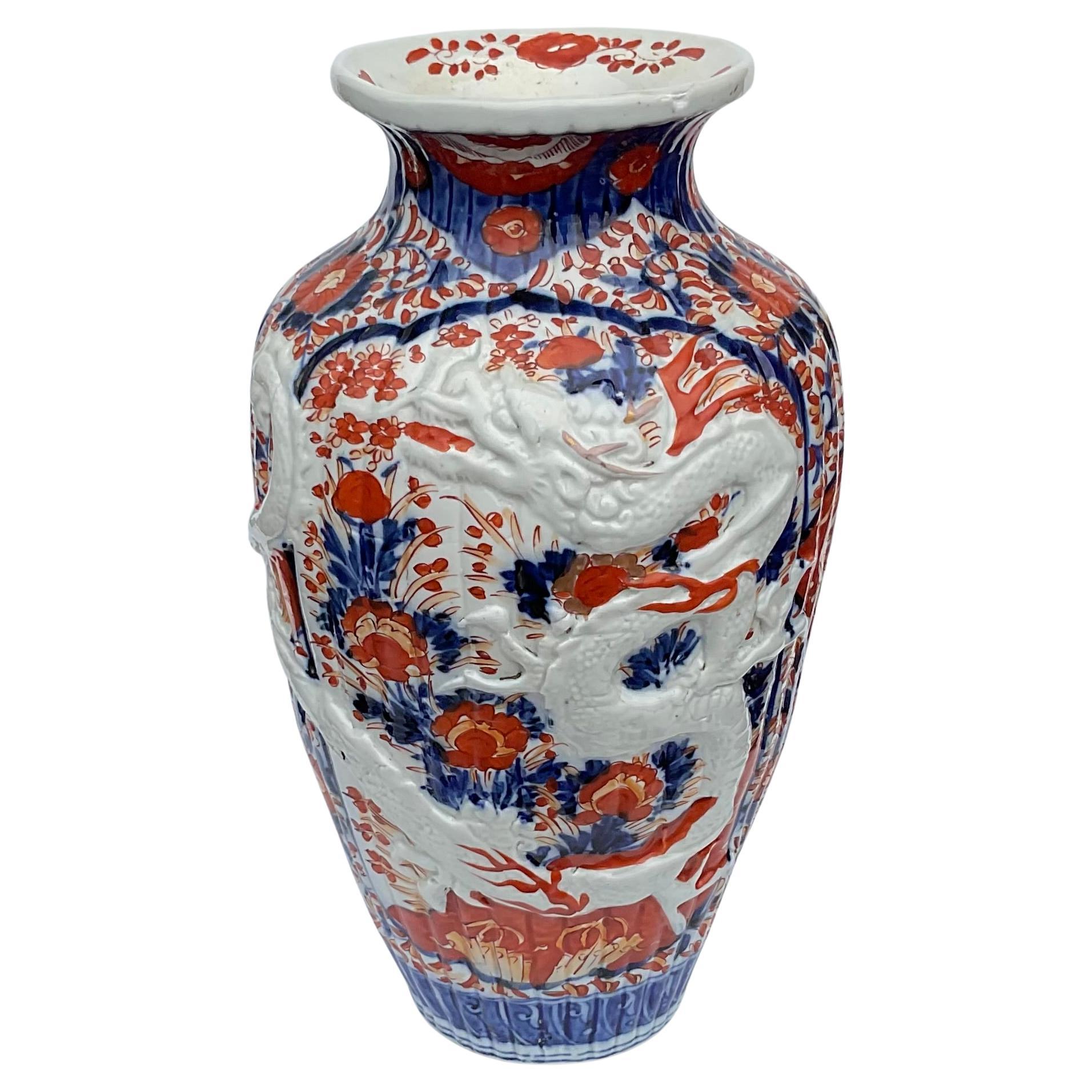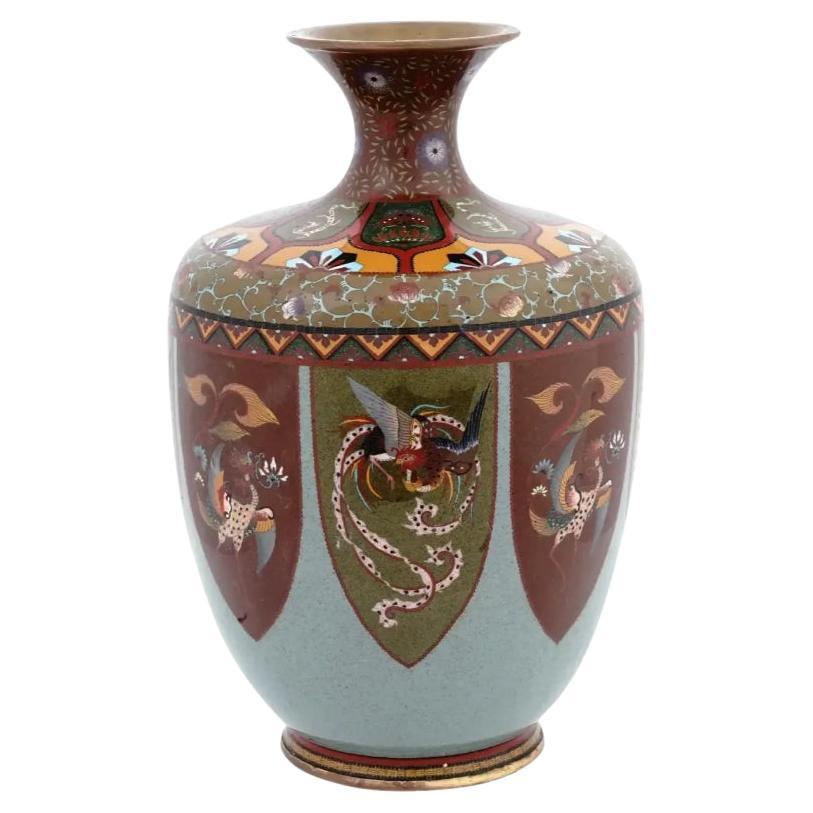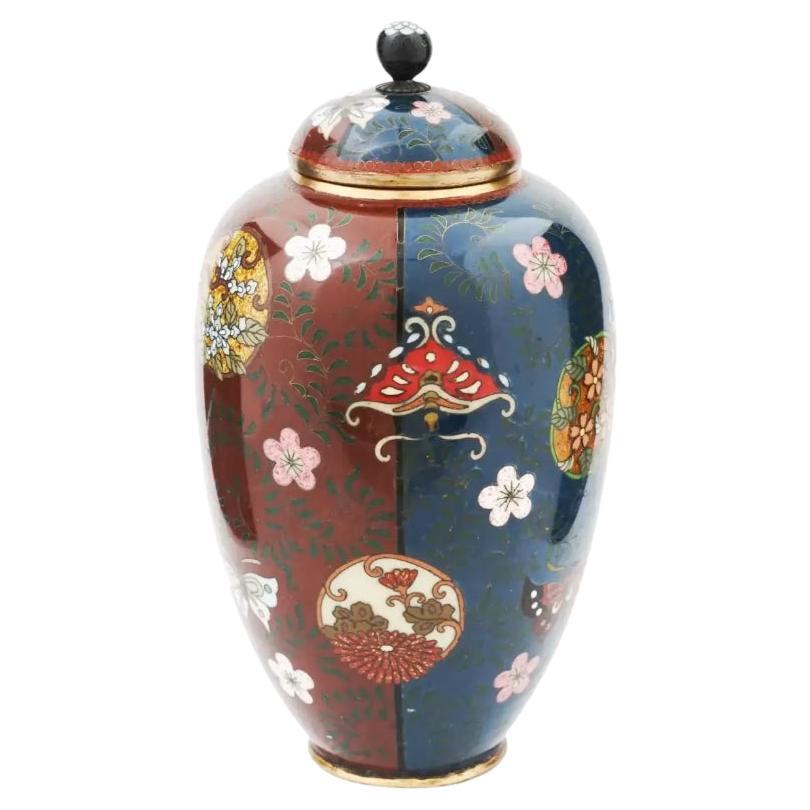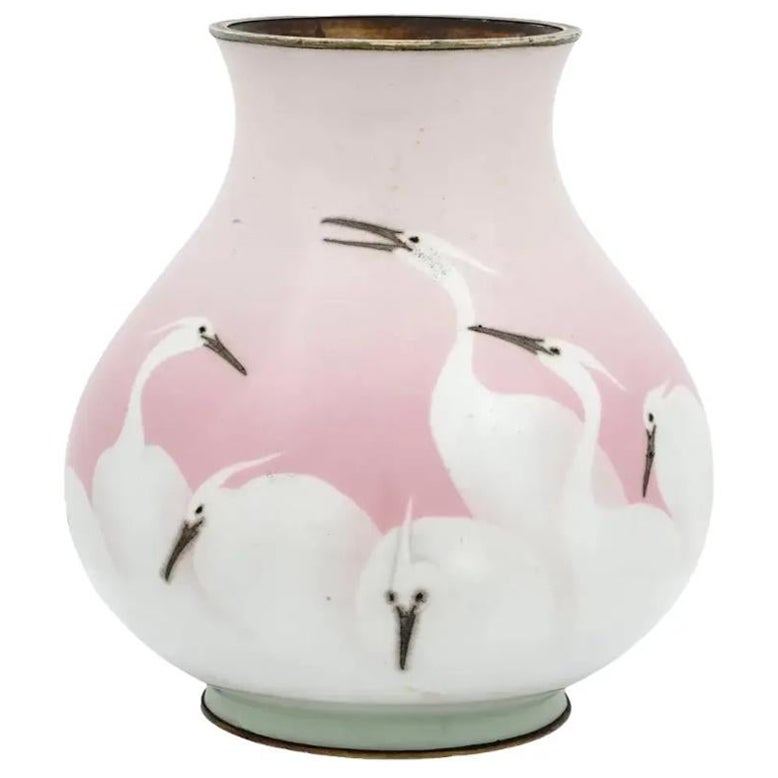Items Similar to Large Meiji Era Cloisonne Vase with amazing bird decoration
Want more images or videos?
Request additional images or videos from the seller
1 of 10
Large Meiji Era Cloisonne Vase with amazing bird decoration
About the Item
Meiji Period amazing Japanese Cloisonne vase.
Meiji Period
(1868-1912). The reign of Emperor Meiji and the beginning of Japan's modern period. It started on October 23, 1868, when the 16-year-old emperor Mutsuhito selected the era name "Meiji" ("enlightened rule") for his reign; the emperor himself is therefore posthumously known as Meiji. The period commenced with the collapse of the Tokugawa Shogunate and the sweeping reforms attendant upon the Meiji Restoration; it was followed by the Taishï¿ Period (1912-26). The Meiji period saw Japan's transformation from a feudal polity into a modern industrial state, along with its emergence from isolation into the ranks of major world powers. During the early years of the Meiji period, feudal domains were abolished, the samurai class was phased out, a national education program was implemented, and major institutions (military, banking, industrial production, taxation, etc.) were transformed along Western models. In 1889, a new constitution was approved. The constitution invested the emperor with full sovereignty, declaring him "sacred and inviolable". In spite of its emphasis on the emperor, however, the constitution marked a genuine step toward popular participation. Japan's victories in the Sino-Japanese War (1894-95) and the Russo-Japanese War (1904-05), along with Japan's annexation of Taiwan (1895) and Korea (1910) brought international recognition of Japan's sphere of hegemony in Northeast Asia. But with inroads by Western liberalism and the fear of unrest in the now-industrialized urban centers, Meiji leaders started focusing on upholding Japan's "traditional" institutions. Emperor Meiji, now associated with success in war and always the symbol of modernization, was therefore raised to new heights of reverence. Textbooks in the compulsory school system course in ethics increasingly emphasized national and military heroes as models. The family systems, formally established by an 1898 supplement to the Civil Code, took the samurai family as the norm for the entire nation. The commonwealth was now described as a "family state" in which political and familiar loyalties reinforced each other. The Home Ministry undertook to place the native cult of Shinto at the service of the government. The Meiji period thus left succeeding generations of Japanese with an ambiguous heritage. By the time of the emperor's death in 1912, Japan stood as a model of rapid and largely successful modernization. In less than half a century it had developed from an isolated, semifeudal society into a modern state that had secured for itself a prominent place in the world community. At the same time, the rapidity of this change had left a number of difficult social problems unresolved and a tendency toward authoritarian solutions that threatened its fledgling constitutional order. Historians' interpretations of the Meiji period, therefore, vary according to their assessment of the conflicting elements of the Meiji legacy; they are unaminous, however, in seeing it as the foundation of Japan's modern experience.
- Dimensions:Height: 22.75 in (57.79 cm)Width: 9.25 in (23.5 cm)Depth: 9.25 in (23.5 cm)
- Materials and Techniques:
- Period:1900-1909
- Date of Manufacture:1900s
- Condition:Wear consistent with age and use.
- Seller Location:Ann Arbor, MI
- Reference Number:1stDibs: LU6641228490362
About the Seller
5.0
Vetted Seller
These experienced sellers undergo a comprehensive evaluation by our team of in-house experts.
Established in 1990
1stDibs seller since 2022
34 sales on 1stDibs
Typical response time: 1 hour
- ShippingRetrieving quote...Ships From: Ann Arbor, MI
- Return PolicyA return for this item may be initiated within 2 days of delivery.
More From This SellerView All
- LARGE Meiji Era Japanese Imari Full Dragon Vase with Amazing DetailLocated in Ann Arbor, MILARGE Meiji Era Japanese Imari Full Dragon Vase with Amazing DetailCategory
Antique Early 1900s Japanese Vases
MaterialsPorcelain
- Large Cloisonné Artist Signed Vase with Amazing Decoration, circa 19th CenturyLocated in Ann Arbor, MILarge Cloisonné Artist Signed Vase with Amazing Decoration, circa 19th century. The form of the vase is very unique. Amazing enamel decoration.Category
Antique 19th Century Asian Vases
MaterialsBronze
- Pair Japanese Bronze Meiji Era Vases with Multiple Birds on Branches SignedLocated in Ann Arbor, MIPair Japanese Bronze Meiji Era vases with multiple birds on branches very detailed with multiple ways to display. Both vases are signed as shown.Category
Antique Early 1900s Japanese Meiji Vases
MaterialsBronze
- Large Matching Pair Satsuma Meiji Era Figural Vases Figures in Clouds Gold LeafBy SatsumaLocated in Ann Arbor, MILARGE Matching Pair Satsuma Meiji Era Figural vases figures in clouds gold leaf. Amazing multi color decoration. Vases display prominently from any decor...Category
Antique Early 1900s Japanese Meiji Pottery
MaterialsPottery
- Pair Fine Japanese Porcelain Satsuma Vases Artist Signed Meiji EraLocated in Ann Arbor, MIAntique Pair of Fine Satsuma vases with animal handles and amazing hand painted decoration. Each piece is signed by the artist. Vases are 7.5 inches ...Category
Antique Early 1900s Japanese Vases
MaterialsPorcelain
- Ando Large Cloisonne Japanese Royal Presentation Vase with Royal Crest SignedBy Ando JubeiLocated in Ann Arbor, MIAndo Large Cloisonne Japanese royal presentation vase with royal crest in vibrant blue with amazing decorative handles. Signed on the bottom with An...Category
Vintage 1930s Vases
MaterialsEnamel
You May Also Like
- Large Japanese Meiji Cloisonne Enamel Vase with Birds of ParadiseLocated in New York, NYA fine quality Japanese cloisonne vase having a flared rim to slender neck and baluster body. The surface is enameled with highly detailed polychrome medallions depicting highly deta...Category
Antique Late 19th Century Japanese Meiji Vases
MaterialsBrass, Enamel
- Japanese Cloisonne Enamel Meiji Era Dragon and Phoenix Bird Goldstone VaseLocated in New York, NYA large antique Japanese Meiji era enamel over brass vase. The amphora shaped vase is enameled with polychrome medallions with a Phoenix bird and a dragon surrounded by floral, and f...Category
Antique Late 19th Century Japanese Meiji Vases
MaterialsEnamel
- Antique Japanese Meiji Era Cloisonne Enamel VaseLocated in New York, NYAn antique Japanese Meiji era covered amphora shaped enamel over brass urn vase. The exterior of the vase is adorned with polychrome enameled continuo...Category
Early 20th Century Japanese Meiji Vases
MaterialsBrass, Enamel
- Japanese Meiji Era Wireless Cloisonne Enamel VaseLocated in New York, NYAn antique Japanese copper vase with wireless cloisonne enamel design. Late Meiji era, before 1912. Round shape with pronounced base. The piece i...Category
Antique Late 19th Century Japanese Meiji Vases
MaterialsEnamel, Copper
- Japanese Meiji Era Cloisonne Enamel Vase SignedLocated in New York, NYAn antique Japanese copper vase with cloisonne enamel design. Late Meiji period, 1868 to 1913. Miniature dark cobalt blue vase with a round body and long neck. The neck is decorated ...Category
Early 20th Century Japanese Meiji Vases
MaterialsEnamel, Copper
- Antique Meiji Era Japanese Cloisonne Enamel VaseLocated in New York, NYAn antique Japanese Meiji Era brass and enamel vase, circa: early 20th century. The baluster form vase is enameled with polychrome images of blossoming flowers and plants and birds made in the Cloisonne technique on a black ground. The border of the base is decorated with a traditional Greek...Category
Early 20th Century Japanese Vases
MaterialsEnamel
Recently Viewed
View AllMore Ways To Browse
Bird Decoration
Furniture From The Modern Era
Industrial Era
Antique Cloisonne Vase
Antique Cloisonne Vase Cloisonne
Antique Cloisonne Vase Vases
Antique Cloisonne Vases
Antique Vase Symbols
Large Antique Saw
Japanese Military
Japanese Vase With Birds
Civil War Era
Asian Vase Bird
1900 Japanese Vase
Large Cloisonne
Asian Large Vessel
Asian Vase With Birds
Japanese Cloisonne Vase





